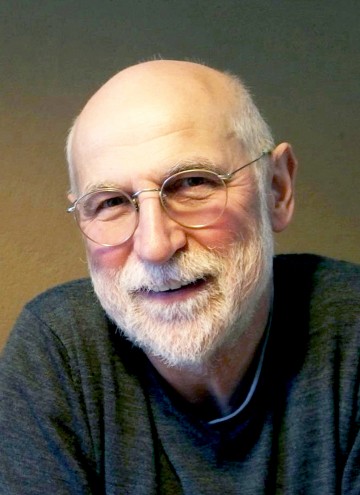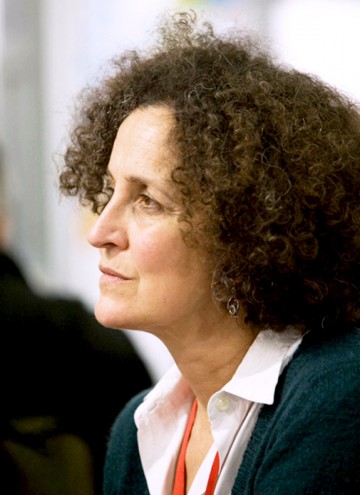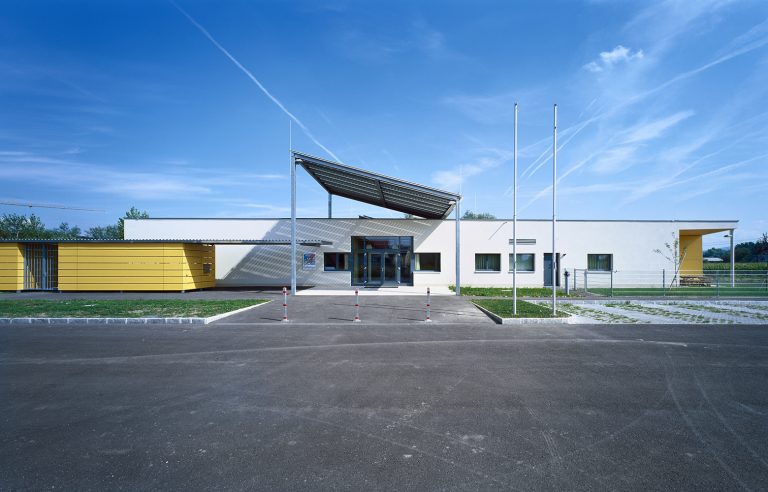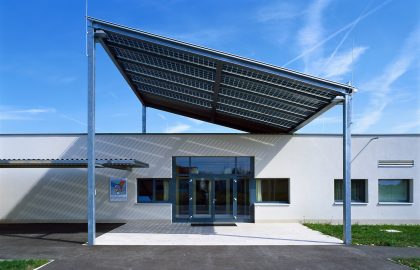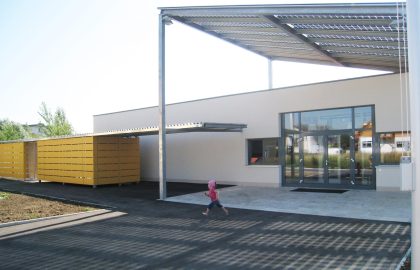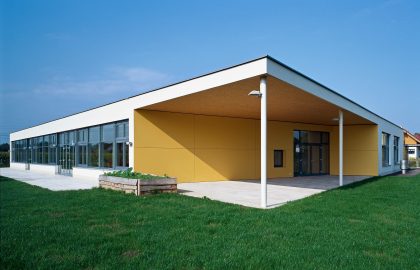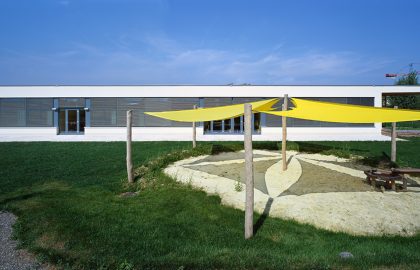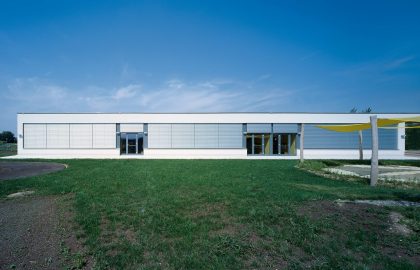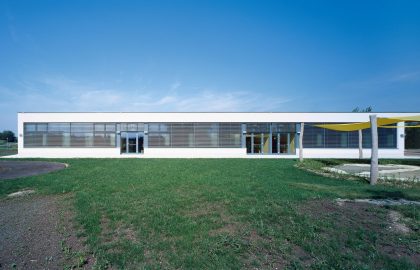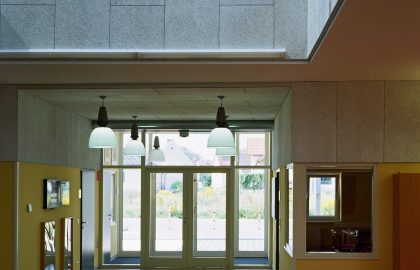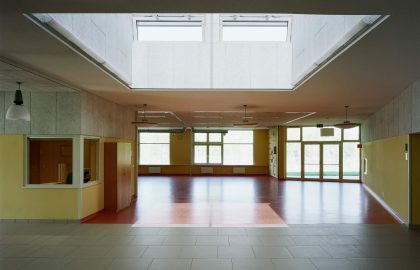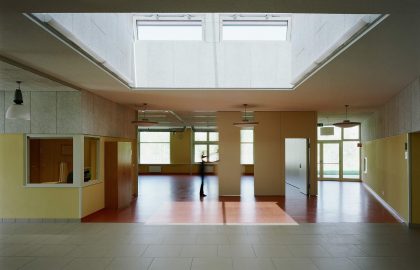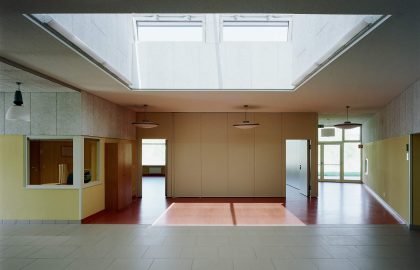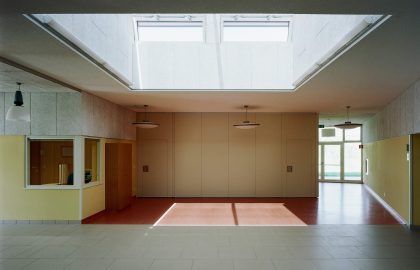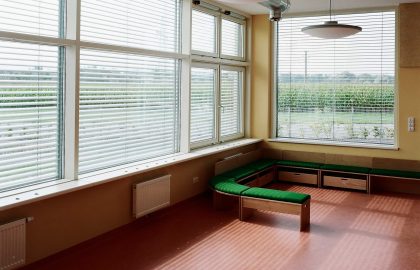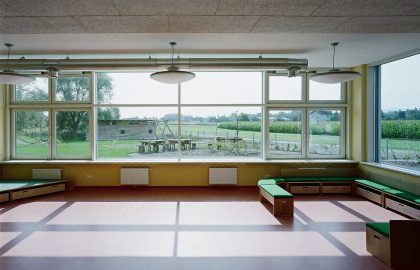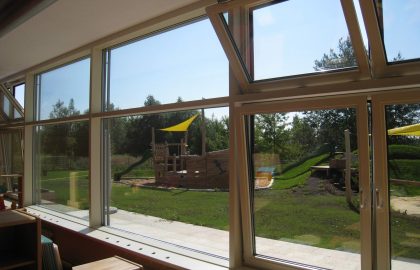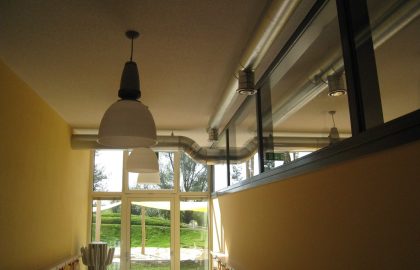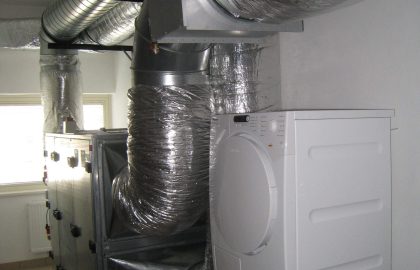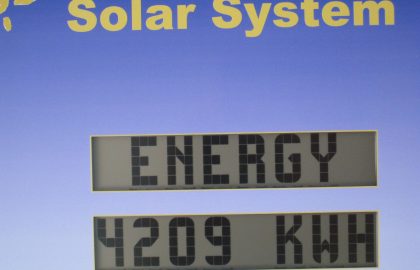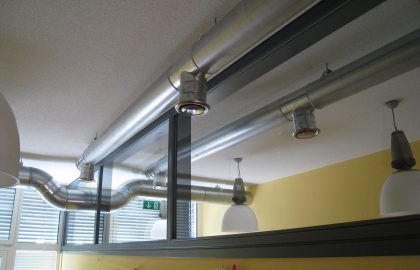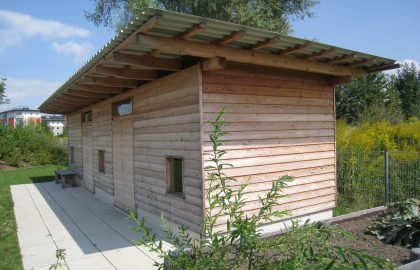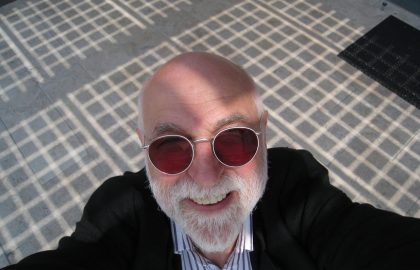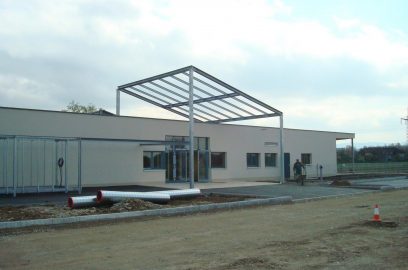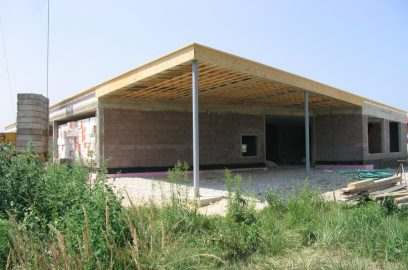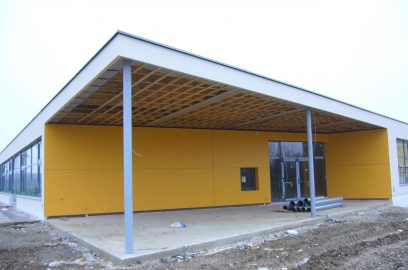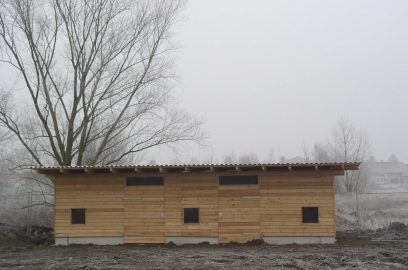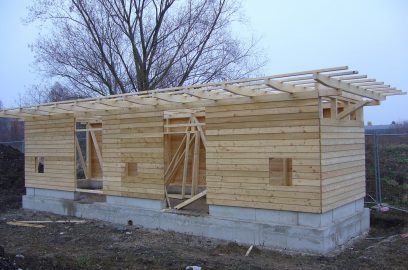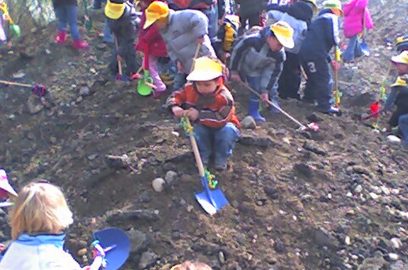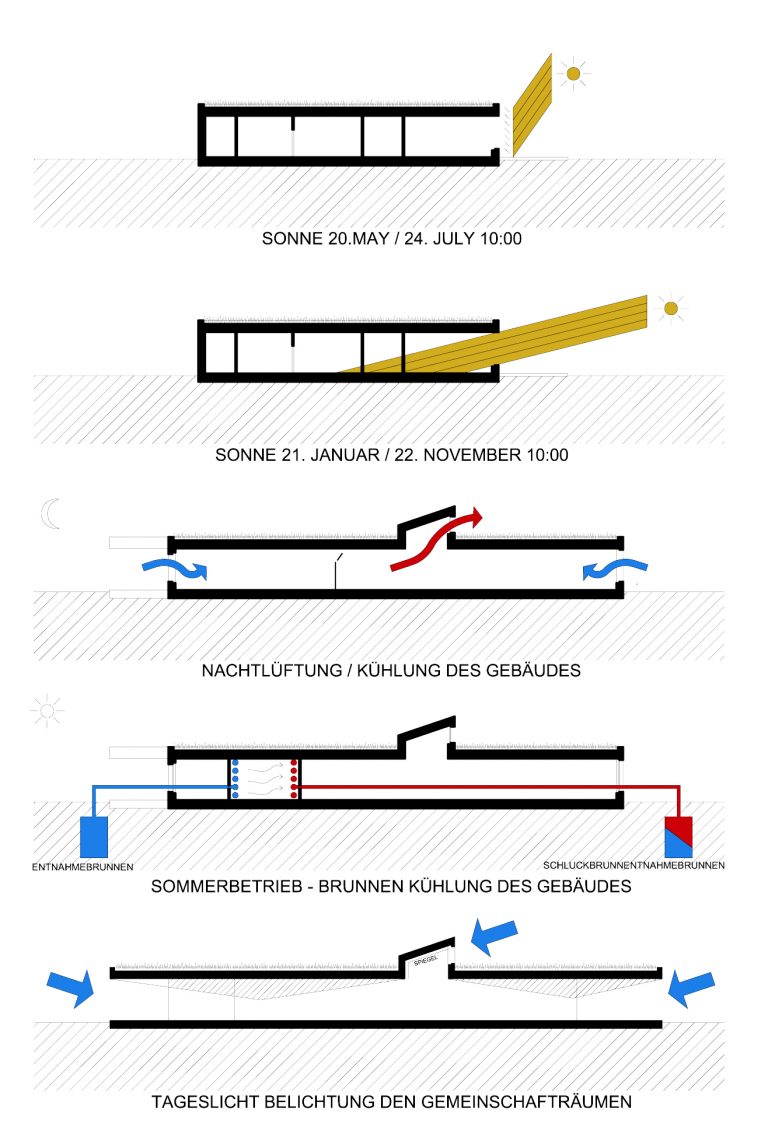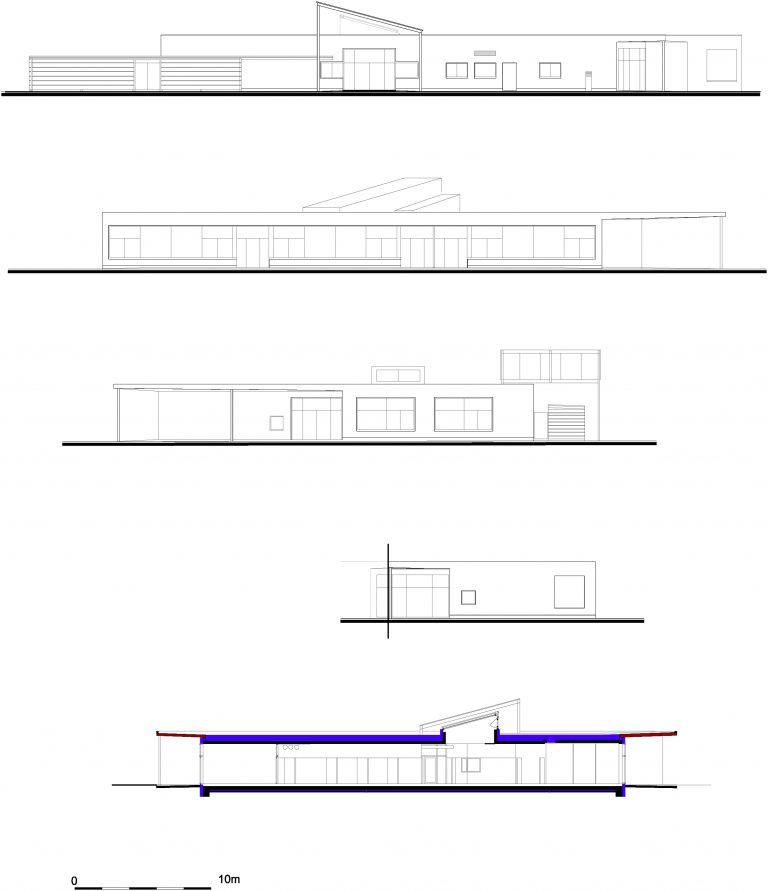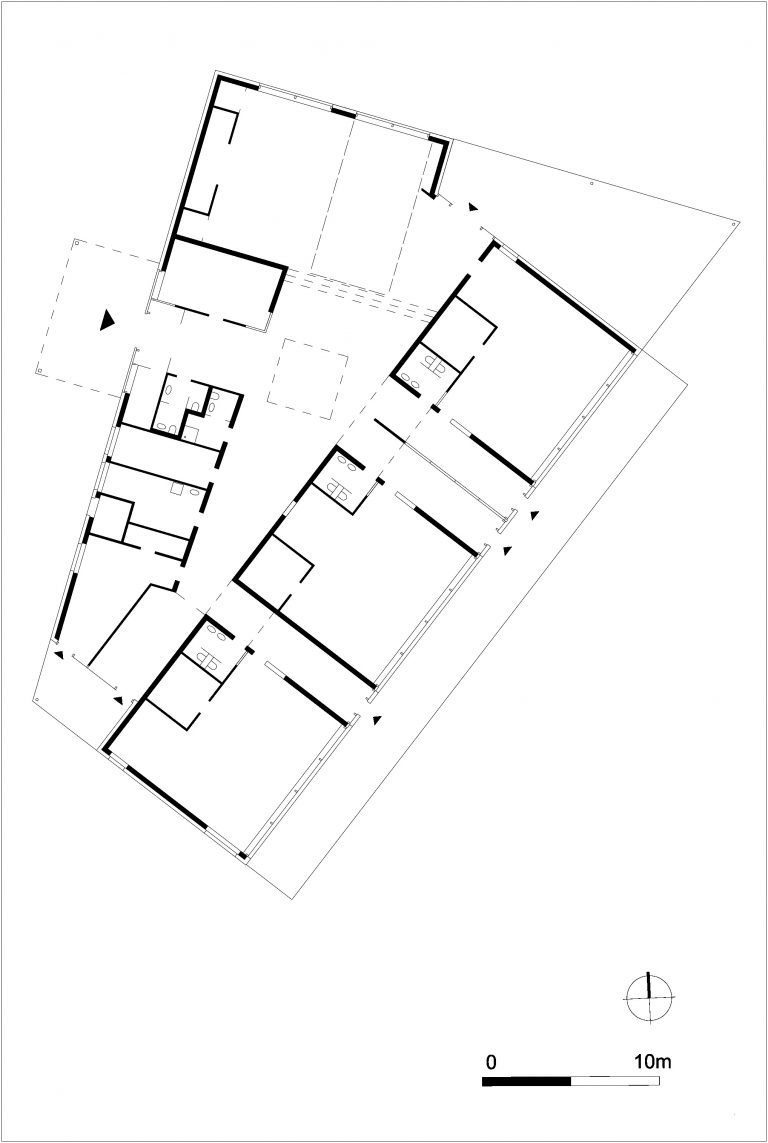Urban Solution
The site configuration and the location of the building were chosen so that the building with its group of rooms, opens both to the east (morning sun) and south (the midday sun and views of the Alps region) so there is a sunny garden until the afternoon. The simple cube has on one hand continuance over the larger buildings in the north and east, and differs in size from single-family homes in the east. The green area opens to the green space in the south.
Development
The entrance is from Allumimium Road. The parking lots are located here in line with the other buildings and perpendicular to the roadway of the aluminum road arranged. The walkway is constructed in a way, that the roadway and the sidewalk don’t cross. Directly in front of the entrance two longitudinal parking spaces permit the safe exit of children (parental-child-nursery-teacher-eye-contact, until the child is in the building). The sidewalk widens at the entrance to a small space. The great entrance hall serves the internal development of all the rooms. From this you get to a northern covered free patio.
Kitchen and tea kitchen are directly accessible from the outside. The semi-transparent photovoltaic roof over the entrance is a symbol for the ecological concept of this kindergarden.
Architecture
The closed cube is a compact structure. This consists of two opposing structures (group rooms – function rooms), so that in the middle of the building the common hall emerges. Openings to the southwestern and north-eastern corners offer “free space rooms” and allow a view through the hall and through the building. Across the entrance intersects the access to the buildings. This incision presents itself through the roof panel and reaches with the photovoltaic canopy into the public sphere beyond the sidewalks. The group rooms turn (like the sun in the morning) from the northern direction of the aluminum road to the south and allow a sunny life in these areas.
Differentiated are common areas exposed: the multifunctional space receives its light from the southwest (with a large sun canopy), and the large hall opening receives the light from above (with a view of the sky), supplemented by indirect lighting from all four cardinal points, the exercise room is lighted from the north region. The location of the assembly room allows an overview of the entire entrance and all common areas.
The movement space can be separated from the entrance hall with a large sliding door. This sliding door has two doors integrated to allow that (in the case of the slight pull of this wall), only the larger part of the movement area is closed to the hall, but that also with total completion two independent separately accessible spaces exist. An additional extension allows a second sliding wall in the east. The group rooms are opposed by the functional spaces in the west. Two covered, in the building incised terraces complement the hall and the exercise room or the multi-functional room with outdoor spaces.
Energy Concept
- Heat Supply
The energy concept is primarily meant for heat preservation and passive use of solar energy. The orientation of the transparent surfaces enables high solar gains in the main utilization time (morning). The compact structure is highly insulated. A central ventilation system with heat recovery and an airtight building envelope to minimize ventilation heat losses. This is a high total solar coverage achieved. The structure figure was chosen in such a way, that the group rooms are oriented to the southeast. This allows the children to enjoy the sunlight throughout the time and the passive solar gains are then available when these profits are actually needed.
- Power Supply
A small PV system (60 m²) covers the increased power requirement that results from the additional building equipment is more than sufficient. Due to the dual function of the PV system as a canopy not only the effectiveness (good ventilation) of this technique is increased, but it also reduces the investment costs.
- Summer Overheating Protection
The basis for the concept of passive cooling is the high thermal insulation and the full prevention of summer sun. External blinds prevent the entry of both direct as well as diffuse radiation. In addition, nocturnal flushing of the building with cool night air is possible: tilted windows and skylight doors (with blinds) are used as an air inlet and the skylight windows as a ventilation opening.
This night’s coolness will be stored in the building mass and remains in the building through the ventilation heat recovery equipment.
- illumination
The group rooms will receive direct sunlight during the entire time of use (in summer, according to the needs on movable slats filtered).
The children’s play areas are slightly less lit (differentiated room atmosphere) and gain additional light through a small window (and view) from the hall or from the southwest or northeast).
The hall uses the southern daylight through an overhead window (the high light source is a good source of illumination) and indirectly through the multi-functional-room, the movement area, and a group room as well as on the main entrance in the north-west and a secondary exit in the North-East. Overall, at each point, sufficient exposure is ensured, so that the demand for electricity for lighting is minimized.
- water Supply
All rainwater will be drained away on the site (the roof water will be held back on the grass roof).
